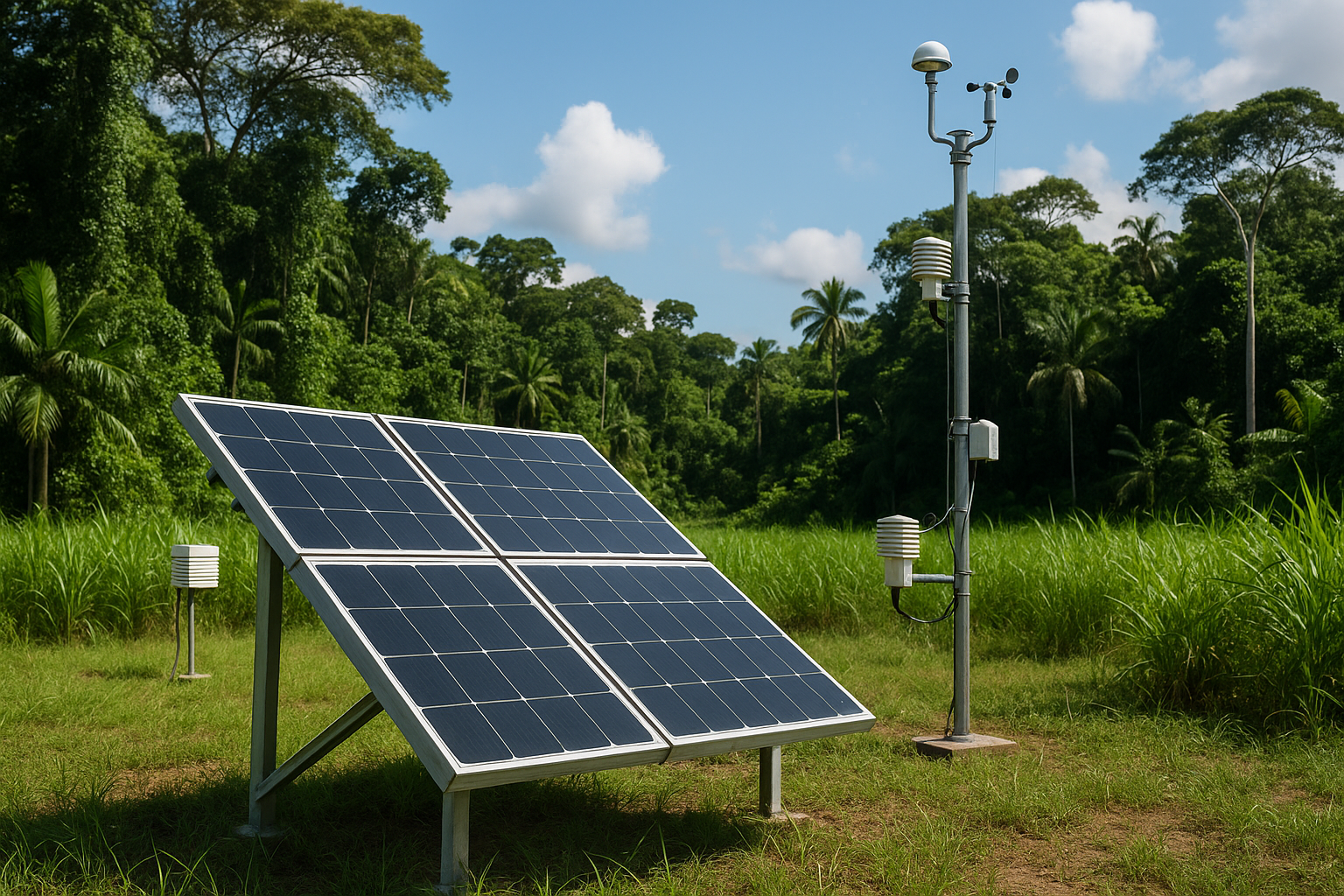Machine learning boosts solar radiation forecasting for Amazonian agriculture
Global solar radiation (Hg) is a foundational input for calculating evapotranspiration, crop growth, irrigation needs, and photovoltaic energy yields. Yet, direct measurements of Hg are sparse across the Amazon due to the region's vast area and infrastructural limitations. This lack of data hinders the accuracy of agrometeorological models and complicates environmental planning.

Reliable solar radiation data is becoming increasingly critical for agricultural and environmental planning in the Amazon Basin. A new scientific study proposes the use of machine learning to improve estimations of daily global solar radiation, offering a powerful tool for precision agriculture, water management, and sustainable energy development in one of the world’s most biodiverse and ecologically vital regions.
The research, titled “Machine Learning in Estimating Daily Global Radiation in the Brazilian Amazon for Agricultural and Environmental Applications”, was published in Agriengineering. The study applies and compares several machine learning algorithms to model solar radiation using meteorological variables, aiming to fill a critical data gap in remote and under-monitored areas of the Brazilian Amazon.
Why accurate radiation estimates are crucial for Amazonian agriculture
Global solar radiation (Hg) is a foundational input for calculating evapotranspiration, crop growth, irrigation needs, and photovoltaic energy yields. Yet, direct measurements of Hg are sparse across the Amazon due to the region's vast area and infrastructural limitations. This lack of data hinders the accuracy of agrometeorological models and complicates environmental planning.
The authors argue that machine learning offers a cost-effective and scalable method to estimate radiation from commonly recorded meteorological variables such as temperature, humidity, sunshine duration, and cloud cover. By leveraging historical weather data, machine learning models can learn complex patterns and predict daily solar radiation with high precision, even in areas where pyranometers are unavailable.
This approach is particularly relevant for Amazonian states where conventional weather monitoring infrastructure is limited. With agricultural expansion, water stress, and energy planning becoming more urgent, local authorities require reliable radiation inputs to design efficient irrigation systems, predict crop yields, and evaluate solar energy viability.
Which machine learning models were most effective?
The study tested and compared six supervised machine learning algorithms using daily weather data collected in the municipality of Sinop, Mato Grosso, located in the southern Brazilian Amazon. The models included:
- Artificial Neural Networks (ANN)
- Support Vector Machines (SVM)
- Decision Trees (DT)
- Random Forests (RF)
- k-Nearest Neighbors (k-NN)
- Multivariate Adaptive Regression Splines (MARS)
The authors used a variety of performance metrics to evaluate prediction accuracy, including the Root Mean Square Error (RMSE), Mean Bias Error (MBE), and Nash–Sutcliffe Efficiency (NSE). Data were divided into training and testing sets to ensure model robustness.
Among the tested models, Random Forests and Support Vector Machines achieved the highest accuracy in predicting daily global radiation, outperforming traditional empirical models and linear regression approaches. These algorithms were particularly effective in capturing the non-linear relationships between radiation and meteorological inputs.
Notably, the models also demonstrated adaptability across different seasons, with strong generalization during both wet and dry periods. This resilience makes them suitable for the Amazon's complex and dynamic climate, which is marked by sudden shifts in cloud cover, humidity, and precipitation.
How can this research impact policy and practice?
By enabling localized solar radiation forecasts, machine learning models can support site-specific agricultural management practices such as:
- Optimizing irrigation schedules to reduce water waste
- Estimating crop evapotranspiration to improve planting strategies
- Enhancing precision in solar energy feasibility studies
In addition to farm-level benefits, the research provides valuable inputs for environmental monitoring programs and public policy. Accurate radiation estimates support modeling of carbon and water cycles, biodiversity risk assessment, and land-use planning, critical for preserving the Amazon’s ecological integrity amid rising pressures from deforestation and agricultural expansion.
Once trained, the models can be applied to other areas with similar climatic patterns, using weather station data that are already widely collected. This opens the door to extending machine learning-based solar radiation estimation across other regions of Latin America and the Global South, where monitoring infrastructure is sparse.
However, the study also notes that real-world application depends on collaboration between research institutions, agricultural extension services, and public agencies. Data-sharing frameworks, open-source modeling tools, and integration into decision-support platforms will be key to translating the research into practical tools for farmers and policymakers.
- READ MORE ON:
- Machine learning solar radiation
- AI in agriculture
- Artificial intelligence weather forecasting
- Agro-environmental machine learning
- Machine learning models for daily radiation prediction
- AI-based climate forecasting for agriculture
- Sustainable farming using solar radiation data
- Climate-smart agriculture in South America
- Data-driven agriculture in the Brazilian rainforest
- FIRST PUBLISHED IN:
- Devdiscourse










